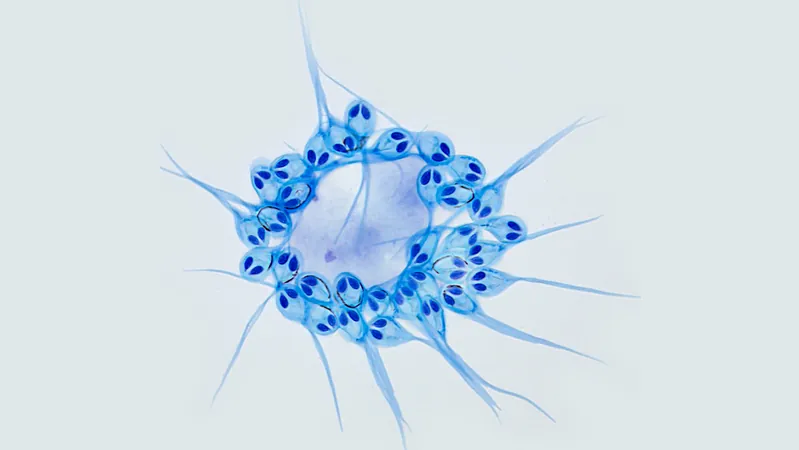
Revolutionary Discovery: Meet Henneguya salminicola, the Oxygen-Free Parasitic Wonder!
2025-01-13
Author: Amelia
Groundbreaking Discovery
In a groundbreaking study, scientists have uncovered a remarkable adaptation in Henneguya salminicola, a member of the Myxozoa group, which surprisingly lacks a mitochondrial genome and, consequently, does not depend on oxygen for survival. This finding adds a new layer to our understanding of metabolic pathways and eukaryotic evolution, challenging the long-held belief that aerobic respiration is universal among animals.
A Challenge to Established Norms
Traditionally, mitochondrial respiration has been a hallmark characteristic of eukaryotic life. However, Henneguya salminicola defies this norm, having independently lost its mitochondrial genome as a survival strategy in an anaerobic environment. Through advanced deep sequencing methods and careful microscopic examinations, researchers demonstrated that this microscopic parasite has essentially traded aerobic respiration for an alternative metabolic pathway better suited to its oxygen-deprived surroundings.
Structure and Function
Remarkably, the cells of Henneguya salminicola still contain structures known as mitochondrion-related organelles (MROs). However, these organelles lack essential genes necessary for aerobic respiration and mitochondrial genome replication. This discovery not only illustrates that aerobic respiration is not a requirement for all life forms but also opens new avenues for understanding how multicellular organisms can adapt to extreme environments.
Comparative Analysis
The absence of mitochondrial DNA was confirmed by comparing Henneguya salminicola with a closely related myxozoan, Myxobolus squamalis, which still retains a complete mitochondrial genome. The contrast between the two, with fluorescence imaging revealing healthy mitochondrial DNA in M. squamalis while H. salminicola exhibited none, underscores the evolutionary shift this parasitic species has undergone.
Significance of the Discovery
This astounding discovery places Henneguya salminicola alongside a select group of unicellular organisms that have lost their mitochondrial functionality due to adaptation to low-oxygen environments. What’s even more fascinating is that such drastic evolutionary changes were thought to primarily occur among single-celled eukaryotes, making Henneguya salminicola's adaptation a significant case study for researchers exploring metabolic evolution.
Future Research Directions
As scientists further investigate this unique organism, they hope to unravel the complexities of its anaerobic metabolism and what it reveals about the evolutionary transitions undertaken by various life forms on Earth. Understanding how Henneguya salminicola thrives without oxygen not only informs us about survival in extreme habitats but also raises questions about the metabolic possibilities that exist beyond the traditional frameworks of biology.
Conclusion
As we delve deeper into the mysteries of life, Henneguya salminicola serves as a proof that evolution can lead to unexpected paths and that the secrets of our planet’s diversity are still unfolding. Stay tuned for more revelations as researchers continue to explore the hidden lives of these captivating organisms!









 Brasil (PT)
Brasil (PT)
 Canada (EN)
Canada (EN)
 Chile (ES)
Chile (ES)
 Česko (CS)
Česko (CS)
 대한민국 (KO)
대한민국 (KO)
 España (ES)
España (ES)
 France (FR)
France (FR)
 Hong Kong (EN)
Hong Kong (EN)
 Italia (IT)
Italia (IT)
 日本 (JA)
日本 (JA)
 Magyarország (HU)
Magyarország (HU)
 Norge (NO)
Norge (NO)
 Polska (PL)
Polska (PL)
 Schweiz (DE)
Schweiz (DE)
 Singapore (EN)
Singapore (EN)
 Sverige (SV)
Sverige (SV)
 Suomi (FI)
Suomi (FI)
 Türkiye (TR)
Türkiye (TR)
 الإمارات العربية المتحدة (AR)
الإمارات العربية المتحدة (AR)